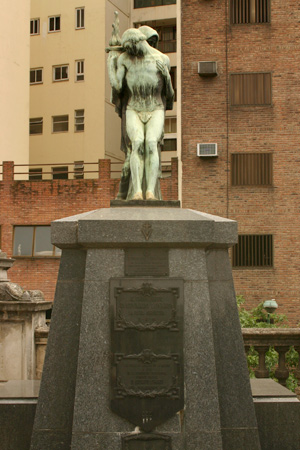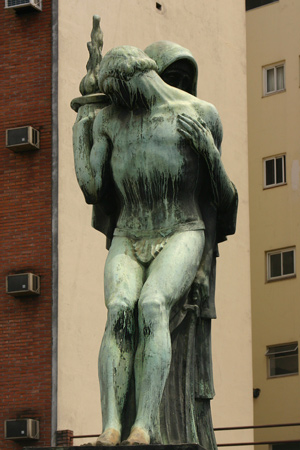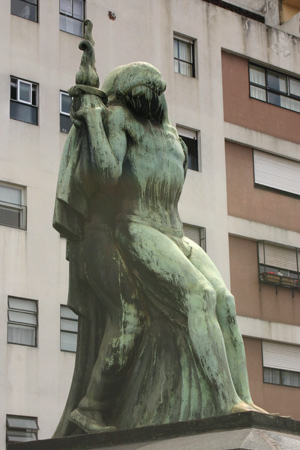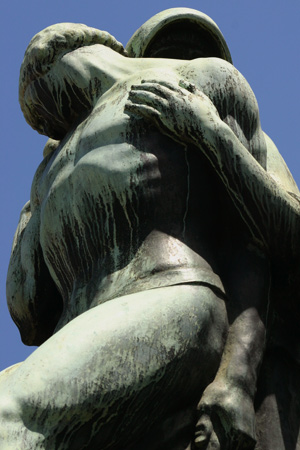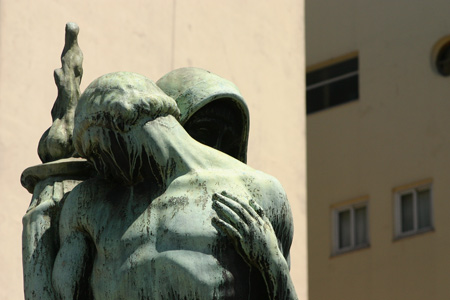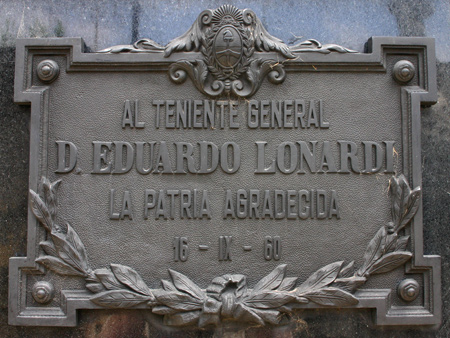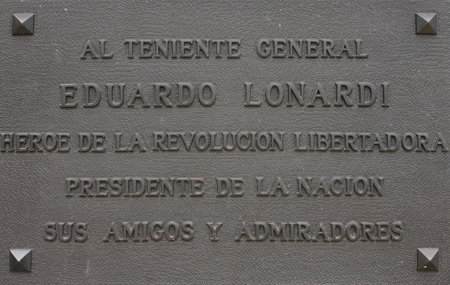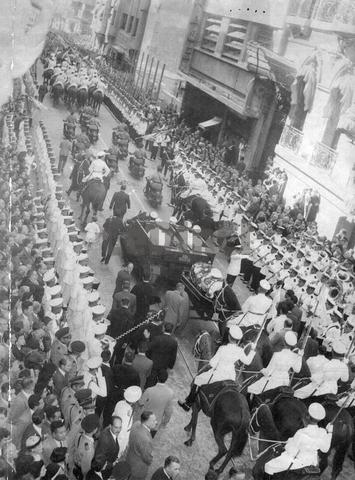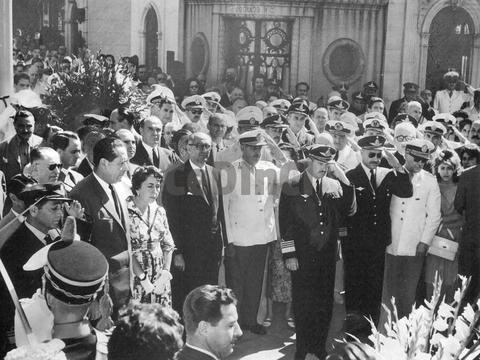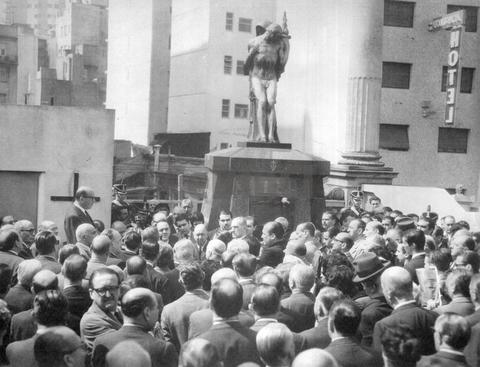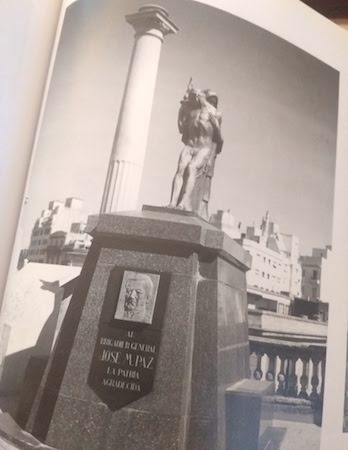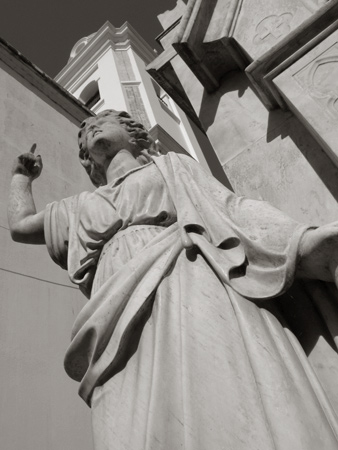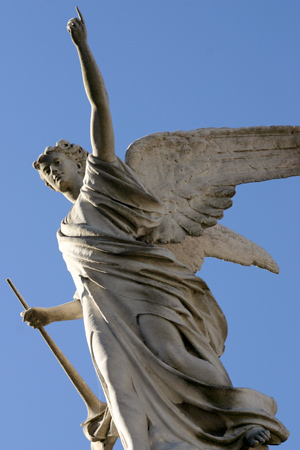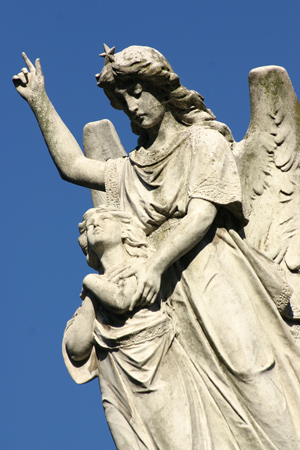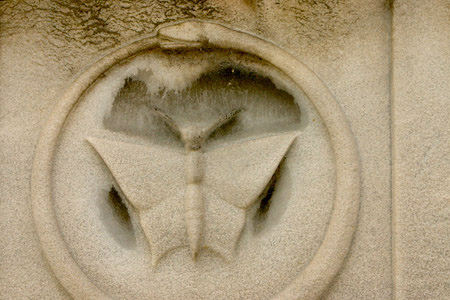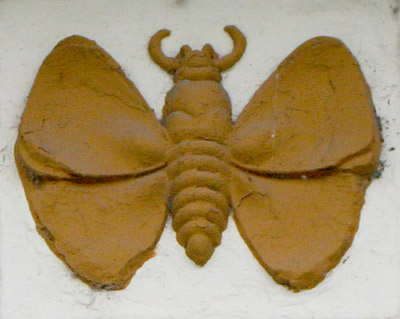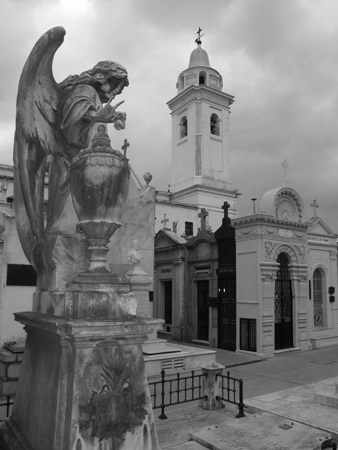Very few burials in the city’s first public cemetery
Recoleta Cemetery, between tourism & abandon by Nora Sánchez
In plain sight are delapidated roofs, vegetation, unlocked doors, deteriorating caskets & broken glass & marble caused by lack of maintenance, theft, & vandalism. But each day it receives more & more Argentine & foreign tourists.
Each day Recoleta Cemetery receives hundreds of Argentine & foreign visitors. The total is calculated to be 1,500 per week, although guides say that there are more than 1,000 per day. But while tourism is on the rise, the actual functioning of what was the city’s first public cemetery is on the decline. In the first 6 months of this year there were 127 burials, less than one per day. As certain families have left no descendants, there are vaults decay due to lack of maintenance & forgetfulness. Tourists stroll between sepulchres with faded names & broken marble.
While searching for Evita’s tomb or discovering the sculpture by Lola Mora on the López Lecube family vault, the visitor encounters others not so well cared for. Like that of Luis Vernet, first governor of the Falkland Islands, which has broken ceiling vents. The July 2006 hailstorm was disastrous. Glass rooftop fixtures were destroyed & not all were replaced. There are coffins which are practically out in the open. “People who take my guided tours ask me why nothing is done for those monuments,” says historian Eduardo Lazzari of the Council of Historic Studies of Buen Ayre.
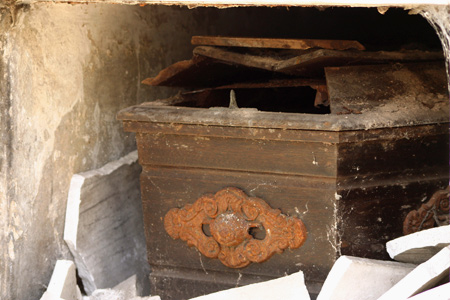
“There are many neglected vaults, but that does not mean that they are abandoned,” states architect Antonio Constantino, head of the Dept of Works of the General Cemetery Administration. “In fact, they continue to serve their purpose. In some cases it is difficult to determine if the owners passed away completely or if they live in another city. Furthermore, a cemetery should not be pristine, & it’s ok that some tombs reflect the passage of time.”
Disorder can be seen in certain open vaults, as if someone had been digging for posthumous treasure. “Although it has been stopped with better private & public police surveillance, until recently antique dealers used the cemetery to collect items to sell,” reveals Constantino.
Cobwebs accentuate the gloomy atmosphere, broken by cats that sleep in the sun on top of certain tombs. Someone feeds them well between the sepulchres. Life also breaks through with plant life invading vaults where no one visits.
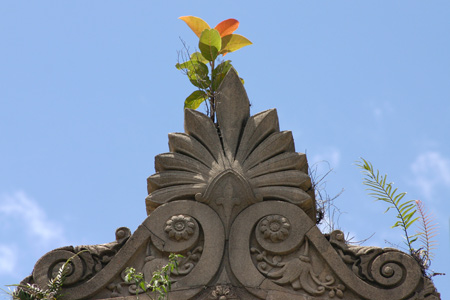
“So-called abandoned vaults are really not abandoned: since they are private property, when the original owner dies they are passed on to their heirs,” explains Horacio Humberto Savoia, of the Friends’ Association of Recoleta Cemetery. “It’s true that in some cases it is difficult to find them but not impossible. We have contacted families who own vaults in poor condition &, under the guidance of our association, repairs have been done… even complicated restoration.” The entity collects funds by selling maps at the cemetery entrance for 4 pesos.
“For the last 10 years basic repairs have been done, from the walkway tiles to the drainage system & lighting,” says Constantino. “Two galleries of niches have also been restored so they can be used & the third will be repaired soon.”
But the vaults, granted under a law of perpetual concession, should be maintained by their owners. “Some [tombs] pre-date the existence of the Civil Code,” affirms Lazzari. “Since a new census/inventory has never been done, the present condition of all the tombs is unknown. And the property register is given to the owner.”
Owners pay an annual fee of 38 pesos per square meter for vaults that are valued from U$S 22,000 to numbers with 5 zeros. “There are those who pay the fee but fail to maintain the tomb,” says Constantino. “Sometimes damage from humidity in one vault affects its neighbor & if the owner can’t be found, we have to authorize the affected neighbor to repair both.”
In the stone of a sepulchre, a tourist named Andhy [sic] clumsily scratched, “Fuck him, yeah.” Also some vaults with niches have broken marble through which half-open boxes seem to creep out. “There is a lot of vandalism: last year some kids hid inside after closing hours & did a lot of damage at night,” tells Constantino. “The sword for the bronze statue at Lavalle’s tomb has been welded over 20 times because it’s constantly being pulled on. Finally it was decided to keep it in a safe place.”
“One time I counted how many people entered in one hour & the number was more than 1,000,” Lazzari points out. “People come in with bags & plaques have disappeared. Also the goths come here, kids who wear all black, to take pictures & shoot films. Once I saw a girl who only wore a black overcoat so she could have naked photos taken inside.”
Savoia, who led a protest against a light & sound show two years ago in the cemetery, adds: “You can’t lose sight that the purpose of a cemetery is that the dead rest in peace for eternity.” Lazzari, whose family also owns one of the vaults, assures: “It doesn’t bother me that people visit the cemetery, but the existing infrastructure is inadequate.”
———————————–
Original article in Spanish located here. Photos above are from Robert Wright.
While I think the general tone is sensationalist & lacks proposing solutions, some important points are raised. Recoleta Cemetery itself is far from neglected, but private property has suffered the brunt of Argentine history. When there are multiple political & economic crises, family tombs are not a priority. Providing for your living family is obviously much more important.
Since a number of vaults are classified as National Historic Monuments, the federal government needs to step in to maintain at least those chosen tombs & mausoleums. And in our 100s of visits to Recoleta Cemetery, neither Marcelo nor I have seen any vandalism or theft in progress. Not to say it doesn’t happen, but I think the article played it up a bit.
